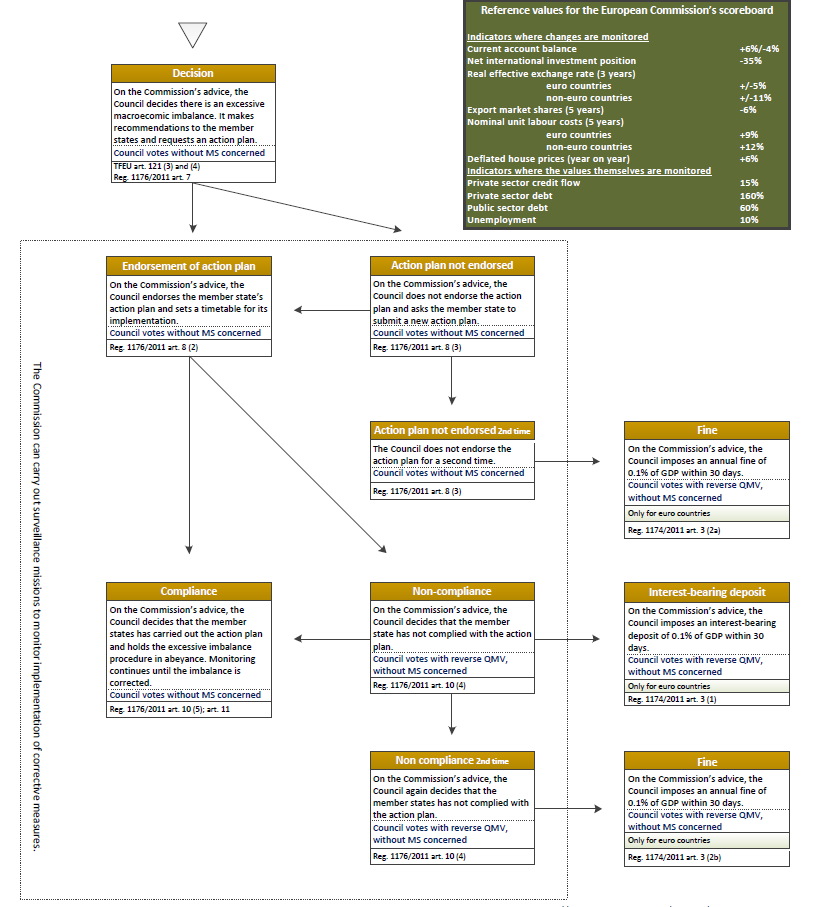EU macroeconomic surveillance: macroeconomic imbalances procedure
The EU monitors the macroeconomic situation in its member states. The European Commission keeps a scoreboard for each member state and tracks a number of economic indicators. If it finds that a member state exceeds the reference value agreed for an indicator, it can investigate the situation in more detail and subsequently recommend that the Council decides that there is an excessive macroeconomic imbalance that must be corrected by the member state.
Council voting procedures
The Council in principle votes by qualified majority voting (QMV), unless stated otherwise. The member state concerned does not cast a vote. If the Council votes on a euro-area country, only euro-area countries have a vote in the Council. In reverse QMV, a Commission proposal is automatically adopted unless a qualified majority of the Council opposes it.

Decision: Based on a recommendation from the Commission, the Council decides whether an excessive imbalance exists, and asks the member state to produce an action plan.
Which subsequent steps may be taken following the decision and the request for an action plan?
Approval: Based on a recommendation from the Commission, the Council approves the member state’s action plan and sets a time path for its implementation, or:
Rejection: Based on a recommendation from the Commission, the Council rejects the action plan and asks the member state to produce a new action plan.
Which steps may be taken following rejection of the action plan?
Second rejection: The Council may reject the action plan for the second time.
Fine: Based on a recommendation from the Commission, the Council may impose an annual fine of 0.1% of GDP within 30 days if the member state’s action plan is rejected for the second time (the Council decides on the basis of reverse qualified majority voting). This fine applies to euro-area countries only.
Which steps may be taken following approval of the action plan?
Approval of action plan: Based on a recommendation from the Commission, the Council decides that the member state has implemented the action plan, and the procedure ends. Surveillance continues until the excessive imbalance is corrected, or:
Rejection of action plan: Based on a recommendation from the Commission, the Council decides that the member state has not implemented the measures and time table stated in the action plan (the Council decides on the basis of reverse qualified majority voting).
Which steps may be taken following rejection of the action plan measures?
Interest-bearing deposit: Based on a recommendation from the Commission, the Council may impose an interest-bearing deposit of 0.1% of GDP within 30 days (the Council decides on the basis of reverse qualified majority voting). This applies to euro-area countries only.
Second rejection of action plan measures: Based on a recommendation from the Commission, the Council decides for the second time that the member state has not implemented the measures and time table stated in the action plan (the Council decides on the basis of reverse qualified majority voting).
Fine for non-compliance: Based on a recommendation from the Commission, the Council may impose and annual fine of 0.1% of GDP within 30 days (the Council decides on the basis of reverse qualified majority voting). This applies to euro-area countries only.